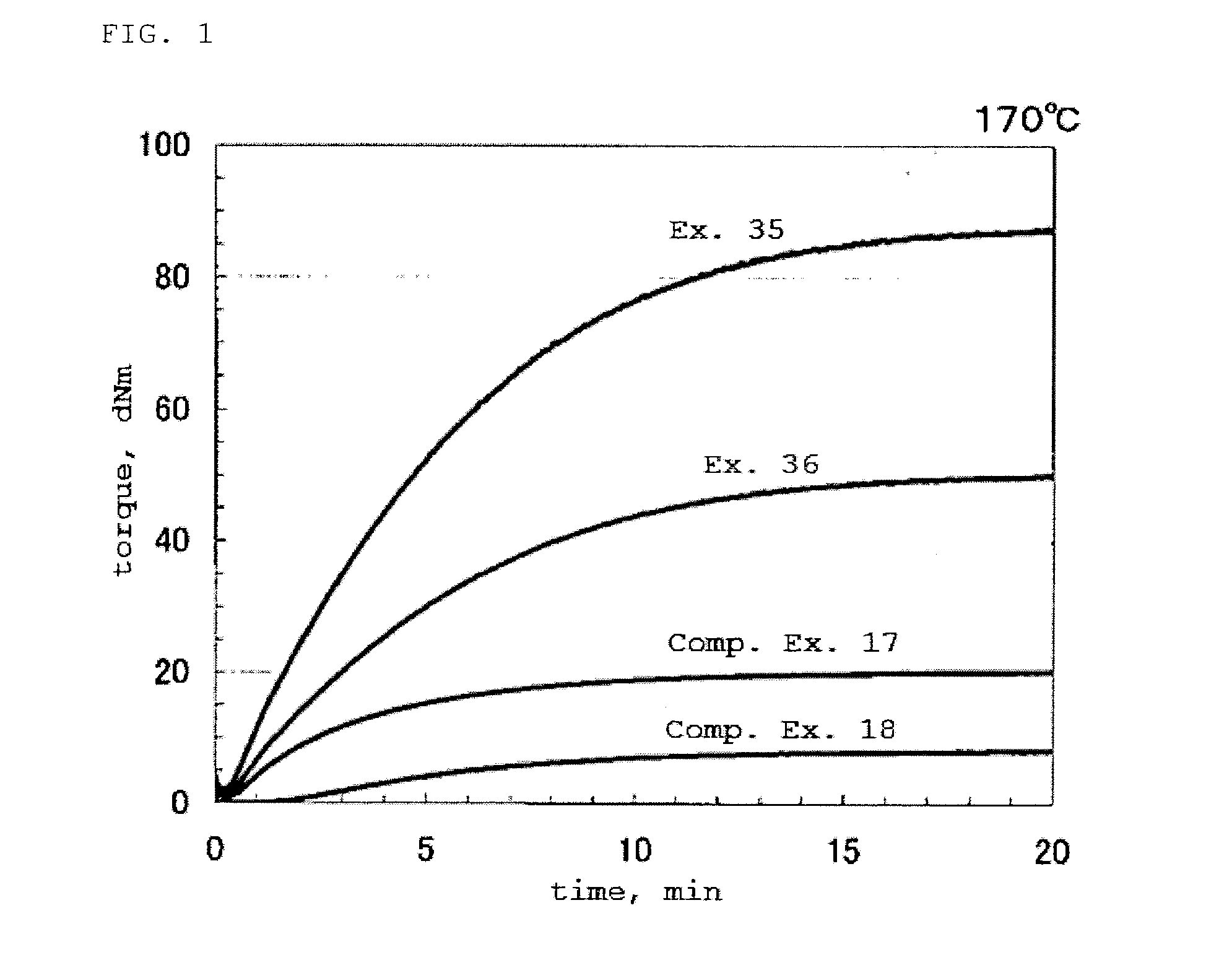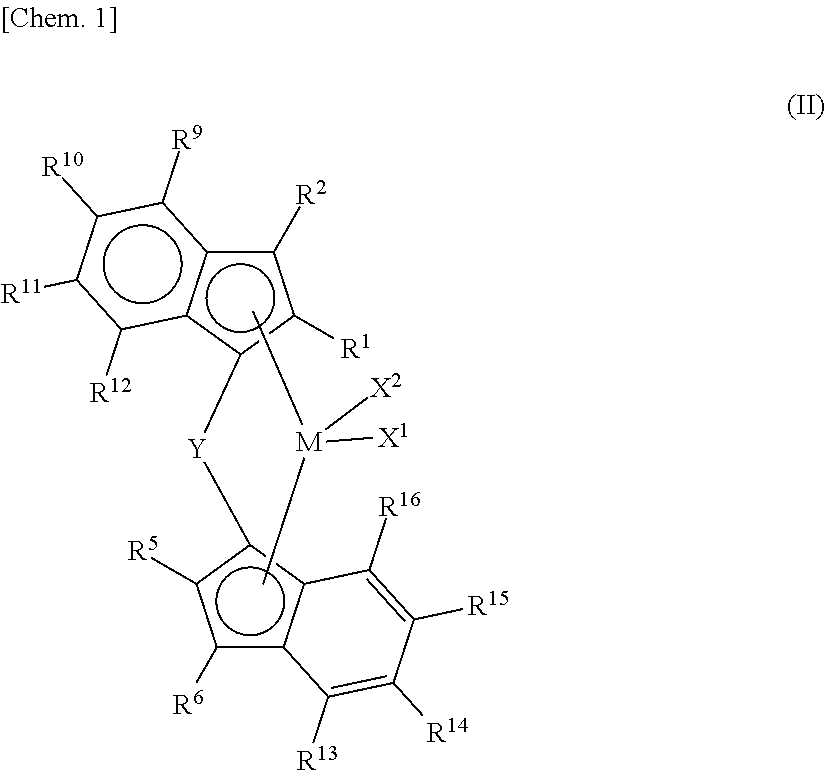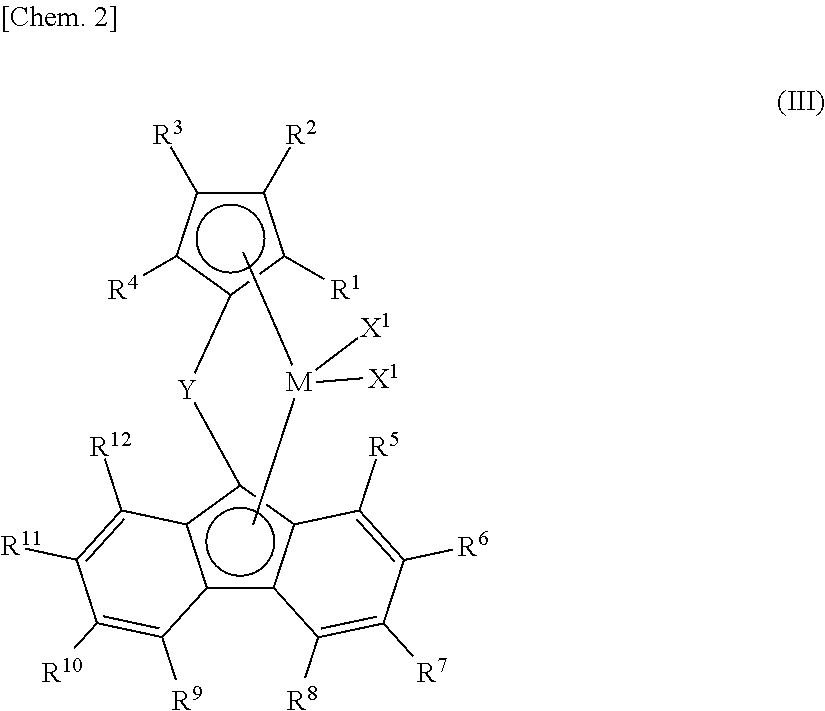Copolymer of olefin and conjugated diene, and process for producing the same
- Summary
- Abstract
- Description
- Claims
- Application Information
AI Technical Summary
Benefits of technology
Problems solved by technology
Method used
Image
Examples
example 1
[0857]A 15 mL volume reactor (a parallel pressure catalytic reactor (product name: Endeavor) manufactured by Argonaut Inc., a system having parallel eight reactors) that had been thoroughly purged with nitrogen was charged with toluene and 0.2 mmol of triisobutylaluminum (also referred to as iBu3Al). The liquid phase and the gas phase were saturated with 1,3-butadiene at 1.0 kg / cm2·G at a temperature of 30° C. The mixture was heated to 40° C., and the reactor internal pressure was 1.1 kg / cm2·G. The system was pressurized with ethylene gas so that the liquid phase and the gas phase were saturated and the reactor internal pressure was 2.0 kg / cm2·G.
[0858]Thereafter, there was added 0.2 mL of a toluene solution (10 mmol / L) of dimethylsilyl[1-(2-methyl-4,5-benzoindenyl)](2,7-di-tert-butylfluorenyl) zirconium dichloride (complex 1) prepared with reference to the method described in J. Organomet. Chem. 2003, (688), 153. Subsequently, a toluene solution (4 mmol / L) of triphenylcarbenium tetr...
example 2
[0860]A 15 mL volume reactor (a parallel pressure catalytic reactor (product name: Endeavor) manufactured by Argonaut Inc., a system having parallel eight reactors) that had been thoroughly purged with nitrogen was charged with toluene and 1.5 mmol in terms of aluminum of a toluene solution of dry methylaluminoxane (Al=1.32 M) (containing methylaluminoxane (20 wt %) manufactured by Albemarle which had been distilled under reduced pressure to remove trimethylaluminum impurity, hereinafter, also referred to as DMAO). The liquid phase and the gas phase were saturated with 1,3-butadiene at 1.0 kg / cm2·G at a temperature of 30° C. The mixture was heated to 40° C., and the reactor internal pressure was 1.1 kg / cm2·G. The system was pressurized with ethylene gas so that the liquid phase and the gas phase were saturated and the reactor internal pressure was 9.0 kg / cm2·G.
[0861]Thereafter, there was added 0.2 mL of a toluene solution (2.5 mmol / L) of rac-dimethylsilyl-bis [1-(2-methyl-4-phenylin...
example 3
[0863]1,3-Butadiene was fed to the reactor and heated to 40° C. in the same manner as described in Example 2, except that the toluene solution of methylaluminoxane (Al=1.32 M) in Example 2 was replaced by 0.05 mmol of triisobutylaluminum (also referred to as iBu3Al).
[0864]The system was pressurized with ethylene gas so that the liquid phase and the gas phase were saturated and the reactor internal pressure was 2.0 kg / cm2·G. Thereafter, there was added 0.2 mL of a toluene solution (2.5 mmol / L) of [hydrotris(3-mesitylpyrazol-1-yl)]borate zirconium trichloride (complex 3) prepared by the method described in Organometallics 2004, 23, p. 460. Subsequently, a toluene solution (4 mmol / L) of triphenylcarbenium tetrakis(pentafluorophenyl)borate (also referred to as Ph3CB (C6F5)4) was added in 1.0 equivalent relative to Zr, thereby initiating polymerization. The polymerization and the post treatments were carried out in the same manner as described in Example 2. Thus, an ethylene / 1,3-butadien...
PUM
| Property | Measurement | Unit |
|---|---|---|
| Melting point | aaaaa | aaaaa |
| Melting point | aaaaa | aaaaa |
| Temperature | aaaaa | aaaaa |
Abstract
Description
Claims
Application Information
 Login to View More
Login to View More - R&D
- Intellectual Property
- Life Sciences
- Materials
- Tech Scout
- Unparalleled Data Quality
- Higher Quality Content
- 60% Fewer Hallucinations
Browse by: Latest US Patents, China's latest patents, Technical Efficacy Thesaurus, Application Domain, Technology Topic, Popular Technical Reports.
© 2025 PatSnap. All rights reserved.Legal|Privacy policy|Modern Slavery Act Transparency Statement|Sitemap|About US| Contact US: help@patsnap.com



